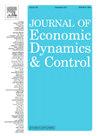具有多个等式和不等式约束的大型贝叶斯var的条件预测
IF 2.3
3区 经济学
Q2 ECONOMICS
引用次数: 0
摘要
条件预测,即对一组感兴趣的变量对一些其他变量的未来路径的预测,是经验宏观经济学家在许多应用环境中经常使用的。尽管如此,用于生成条件预测的现有算法往往是非常计算密集的,特别是在处理大型向量自回归或同时施加多个线性等式和不等式约束时。我们介绍了一种新的基于精度的采样器,它速度快,尺度好,并从线性等式和不等式约束中产生条件预测。我们在模拟研究中表明,所提出的方法产生的预测与现有算法相同,但在一小部分时间内。然后,我们在一个大贝叶斯向量自回归中说明了我们的方法的性能。在这种背景下,我们首先强调如何同时对几个关键的美国宏观经济指标的未来轨迹施加线性平等和不平等约束。接下来,我们在跨越1995年第一季度至2022Q3期间的样本外练习中测试了使用不等式约束的好处,并发现对实际GDP的未来路径施加这些约束会导致大型BVAR模型的点和密度预测显着改善。本文章由计算机程序翻译,如有差异,请以英文原文为准。
Conditional forecasts in large Bayesian VARs with multiple equality and inequality constraints
Conditional forecasts, i.e. projections of a set of variables of interest on the future paths of some other variables, are used routinely by empirical macroeconomists in a number of applied settings. In spite of this, the existing algorithms used to generate conditional forecasts tend to be very computationally intensive, especially when working with large Vector Autoregressions or when multiple linear equality and inequality constraints are imposed at once. We introduce a novel precision-based sampler that is fast, scales well, and yields conditional forecasts from linear equality and inequality constraints. We show in a simulation study that the proposed method produces forecasts that are identical to those from the existing algorithms but in a fraction of the time. We then illustrate the performance of our method in a large Bayesian Vector Autoregression. Within this setting, we first highlight how we can simultaneously impose a mix of linear equality and inequality constraints on the future trajectories of several key US macroeconomic indicators over a forecast horizon spanning multiple years. Next, we test the benefits of using inequality constraints in an out-of-sample exercise spanning the period between 1995Q1 and 2022Q3 and find that imposing these constraints on the future path of Real GDP leads to significant improvement in point and density forecasts of the large BVAR model.
求助全文
通过发布文献求助,成功后即可免费获取论文全文。
去求助
来源期刊

Journal of Economic Dynamics & Control
ECONOMICS-
CiteScore
3.10
自引率
10.50%
发文量
199
期刊介绍:
The journal provides an outlet for publication of research concerning all theoretical and empirical aspects of economic dynamics and control as well as the development and use of computational methods in economics and finance. Contributions regarding computational methods may include, but are not restricted to, artificial intelligence, databases, decision support systems, genetic algorithms, modelling languages, neural networks, numerical algorithms for optimization, control and equilibria, parallel computing and qualitative reasoning.
 求助内容:
求助内容: 应助结果提醒方式:
应助结果提醒方式:


